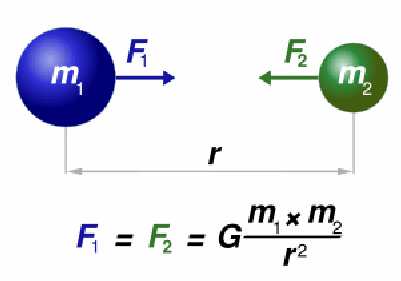The Universal Law of Gravitation brings many observations under the same physical law, from the falling of objects towards the Earth with a uniform and equal acceleration (neglecting air resistance) to the orbits of planets around the Sun, and even the mutual orbits of galaxies about each other and puts Kepler's laws on a theoretical conceptual basis. That the same law could be applied to astronimal and terrestrial objects was a great conceptual leap, one of the greatest ever advances in physics.
Newton proposed that every object in the Universe attracts every other object with a force proportional to the product of their masses and inversely proportional to the square of the distance between them. The force acts along the line between the two bodies, and acts equally on both bodies – that is each both bodies experience the same force.

Mathematically,![]()
The law is used to calculate the orbits of satellites and the trajectorys of space probes throughout the solar system. For a long time it seemed as though the Universe was a machine, with the motion of all the planets and heavenly bodies operating according to the universal law of gravity, so that the future state of the Universe was determined and explained by the past. Newton's law of gravity survived unaltered into the twentieth century.
